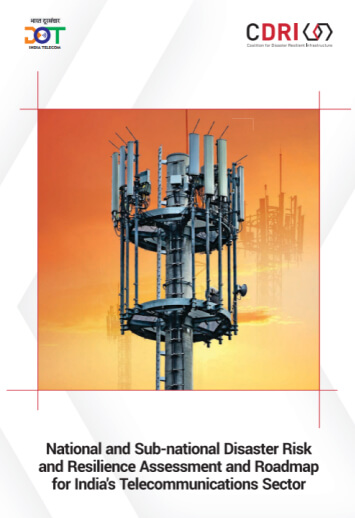India’s telecom sector, contributing ~15% to global GDP, is projected to reach $2.8 trillion by 2030. With over 1.2 billion subscribers, it faces high vulnerability to disasters, 58% of the land is earthquake-prone, 12% flood-prone.
The report, led by CDRI, introduces a multi-hazard risk assessment and the Disaster Risk and Resilience Assessment Framework (DRRAF). It maps risks across geographies and infrastructure types, identifies systemic vulnerabilities, and proposes resilience strategies.
Key recommendations span policy, technical design, operations, finance, and expertise. GIS-based mapping highlights exposure to floods, cyclones, landslides, and lightning. State-specific roadmaps for Assam, Odisha, Uttarakhand, Tamil Nadu, and Gujarat guide disaster preparedness and recovery. The report emphasizes resilient infrastructure, stakeholder collaboration, and digital initiatives to ensure continuity and rapid restoration during disasters.
Key points
- India's telecom sector contributes significantly to global GDP and growth.
- Over half of India is vulnerable to natural hazards and disaster impacts.
- Multi-hazard mapping identifies infrastructure risks across varied geographic regions.
- Disaster resilience framework integrates risk layers and resilience strategies effectively.
- Recommendations include GIS mapping, HAPS adoption, and community awareness programs.
- Actionable roadmaps guide resilience planning for India and five states.




